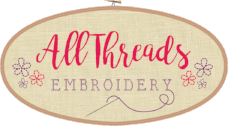
More Information
An unusual and charming English Sampler stitched during the reign of George III, depicting a large central motif of a bee skep surrounded by flowers, bees, butterflies and two large doves set within leafy arbours together with a cottage in a pastoral scene. All are contained within a stunning border with several varieties of flowers including roses and carnations.
The relationship between bee keeping and gardens is centuries old. Skep is derived from the Nordic word Skeppa and they were first brought to England with the Saxons when they surged Westwards circa 410AD after the Roman Empire collapsed.
Bees were a valuable asset to villagers, besides being a medicine, honey and beeswax were used in many ways: making mead; as a sweetener; Curing and preserving food. Beeswax was used for candles and waterproofing clothing. Tithes and rents were sometimes paid in honey, beeswax or swarms of bees.
After an intense search we have found three possible Mary Ann Bournes in our time frame, all lived in Kent which is also known as the Garden County. It is a beautiful part of England with fields of Hops which are used in the making of beer and there are wonderful Oast Houses where the hops are hung to dry.
The original sampler was stitched with silks on uneven linen of approximately 40(w)/46(h) ct. The model has been stitched with Au Ver De Soie silks on 40ct Lakeside Linen Sand Dune. Our design has been based on the mellowed colours of today.
Besides some small areas of satin stitch and a handful of eyelets the sampler is worked in cross stitch over 2 threads with Mary Ann’s name in cross stitch over 1 thread. The sampler has been graded at intermediate stitcher due to the number of stitches, however, it is not beyond an enthusiastic beginner. The bee after all denotes industry.
Stitched area on 36ct linen measures 18½” x 21½” and on 40ct linen measures 16¾” x 19¼”
